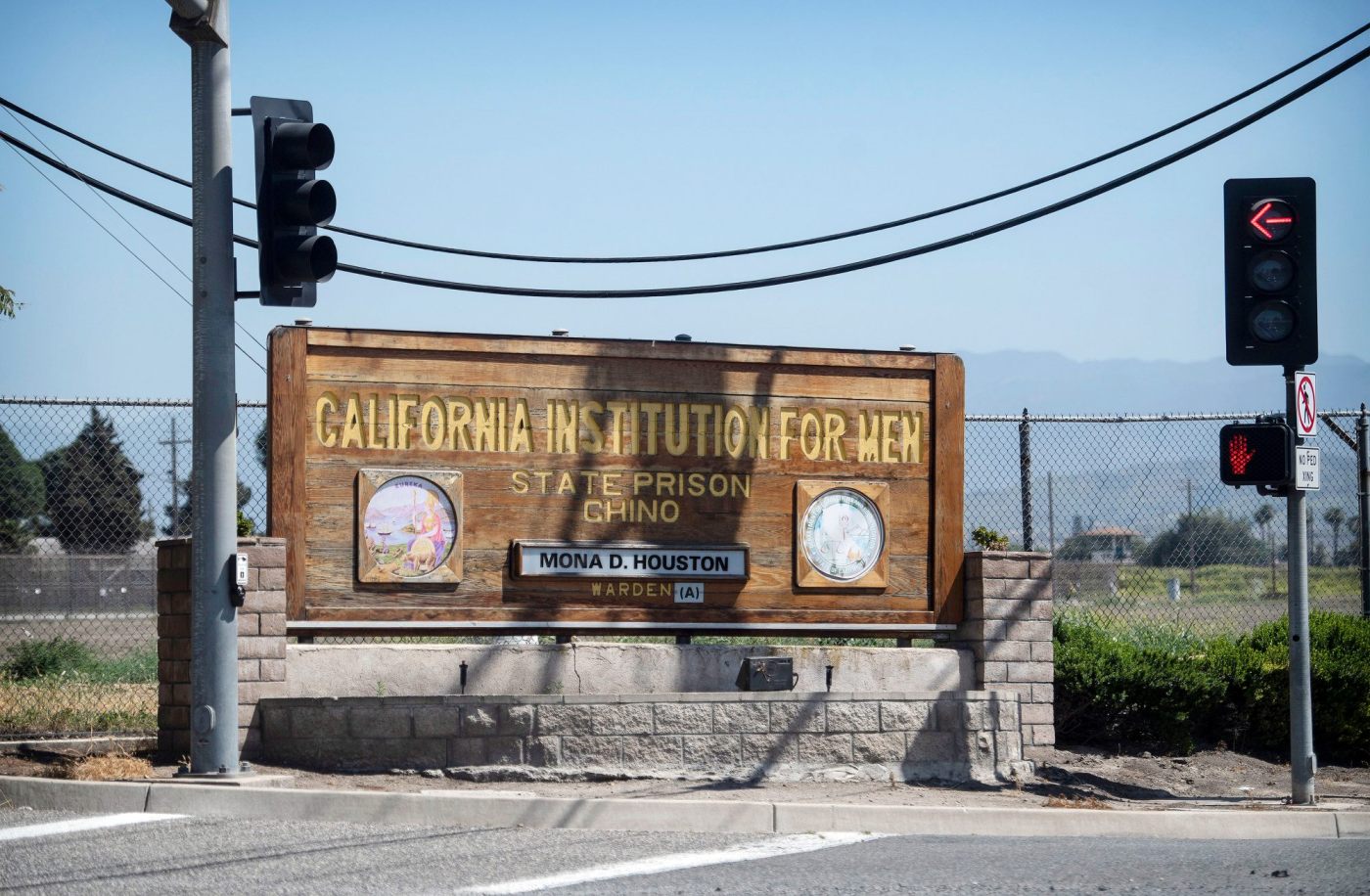The transfer of more than two dozen condemned inmates from San Quentin’s death row to the California Institution for Men in Chino under a new state program has prompted outcry from city officials, who are urging the state to send them elsewhere because of safety concerns.
As of Wednesday, April 17, 26 condemned inmates are being housed at CIM under the Condemned Inmate Transfer Program launched earlier this month, which marked the closure of segregated death row units at San Quentin Rehabilitation Center and the Central California Women’s Facility in Chowchilla, according to the California Department of Corrections and Rehabilitation.
“I am alarmed that the Department of Corrections is transferring these dangerous inmates to one of the oldest prisons in the state,” Mayor Eunice Ulloa said in a news release. “The Department of Corrections needs to immediately remove these horrifically violent offenders from CIM and house them in a prison that is capable of confining people who are sentenced to death.”
CIM houses the third highest number of condemned inmates recently transferred under the program, with California State Prison, Sacramento and California Health Care Facility, Stockton housing the highest numbers at 31 and 35, respectively, according to the CDCR.
All the inmates are being transferred to prisons with electrified fences, and their condemned status has not changed. Further inmate transfers will be conducted in phases and are expected to be completed this summer, according to the CDCR.
Inmates participating in the program will be designated as “close custody” for a minimum of five years, and all activities will be permitted only during daylight hours, according to the CDCR.
Proposition 66 mandate
In compliance with Proposition 66, approved by voters in November 2016, the CDCR began relocating condemned inmates earlier this month to 24 prisons statewide so they could participate in rehabilitative programs and jobs to pay restitution to their victims. The program also allows the CDCR to repurpose existing prison facilities for educational and restorative justice purposes.
It is unclear how many more condemned prisoners are expected to be transferred to Chino and when. CDCR spokesperson Terri Hardy said the department does not discuss movement of incarcerated people due to safety and security issues.
There are 641 condemned inmates in California’s prison system. Since Feb. 26, 189 condemned inmates at San Quentin and 20 from the women’s facility in Chowchilla have been transferred to other prisons under the transfer program, according to the CDCR.
Safety concerns
Chino’s elected and public safety officials have sounded an alarm, citing safety concerns at the prison that have spanned more than a decade, including prior escapes and deteriorating conditions that were noted in an Office of Inspector General report and audit in 2008.
“Considering the Department of Corrections’ lack of investment in the upkeep and maintenance of CIM, I am appalled that they would choose to house the worst of the worst prisoners in our state in such close proximity to residences, schools, and businesses,” Ulloa said in her statement.
In its news release, the city noted a history of escapes at the prison, including the 1983 escape of Kevin Cooper, who murdered three members of a Chino Hills family and a neighbor boy following his escape, and the Jan. 14, 2018, escape of inmate Michael Garrett, 33, who was caught the following day in Encinitas. Garrett had just started a five-year sentence for burglary and auto theft.
Chino police Lt. Aaron Kelliher said Garrett’s escape was attributed to a “number of factors” including a defective alarm system designed to notify corrections officers when a prisoner was “on the fence.”
“It had been defective for three years,” Kelliher said of the alarm system in a telephone interview.
Of the transfers to Chino, which opened in 1941, Kelliher said: “They are continuing to add to the prison population in a prison that should have been closed down due to its age and deterioration.”
Deteriorating conditions
In its 2008 report, the Office of Inspector General noted several safety concerns at the prison: dilapidated housing, failing plumbing, leaking roofs and hazardous materials in need of removal — all of which created an environment that posed safety and security risks for staff and inmates.
In its companion audit, the OIG said the prison had fallen into an unacceptable state of repair due to years of neglect, and would require $28 million annually just to maintain the facility in its current “poor condition.”
Many improvement projects at the prison remained unfunded, according to the audit, and the OIG further warned that if funding was not dramatically increased, conditions would deteriorate to a level necessitating the prison’s demolition by 2014.
Officials at CDCR could not immediately provide information on how much has been spent on improvements at the prison since 2008.
Meeting with warden
Kelliher, along with other members of his department as well as members of the Chino Hills sheriff’s station, the Ontario Police Department and the Chino Valley Fire District, met with CIM Warden Travis Pennington and his staff on Tuesday, April 16, to discuss safety concerns and operations at the prison under the new program, Kelliher said.
“It went well. They committed to continue working with us to find solutions that will allay some of our concerns,” he said in a telephone interview. He said he could not go into specifics on what was discussed because it involved confidential operational procedures at the prison. But Kelliher did say the issues discussed surrounded operations and the transportation of inmates.
He said prison administrators committed to keeping law enforcement and fire officials updated on any security enhancements and other pertinent issues surrounding operations at CIM.
Related Articles
DA, judge throw out special circumstances enhancements against ex-Alameda deputy charged with double murder
California man charged with killing his 8-year-old son and dissolving the body in acid is acting as his own lawyer
Attorneys for condemned killer of 12-year-old Polly Klaas ask judge to reconsider death sentence
Death penalty resentencing: East Bay DAs’ stances on execution
Why Jeff Rosen wants all South Bay convicts off death row
Rocky history
The city has clashed with the CDCR in the past over its plans to build a 48,000-square-foot, 50-bed mental health care facility at the prison.
In June 2019, the city and three other agencies — the city of Chino Hills, the Chino Valley Independent Fire District and San Bernardino County — sued the CDCR, alleging it failed to consider potential security and public safety concerns when it approved plans to build the facility.
The lawsuit alleged the project’s environmental impact report was based on an inadequate description of the prison’s physical condition, lacked detailed project plans, and did not fully address potential impacts the project might have on public safety, traffic, air quality and other infrastructure.
In February 2021, a judge ruled in favor of Chino and the other petitioners on two issues challenging the environmental impact report. City spokesperson Matthew Bramlett said the CDCR subsequently revised its environmental impact report.












